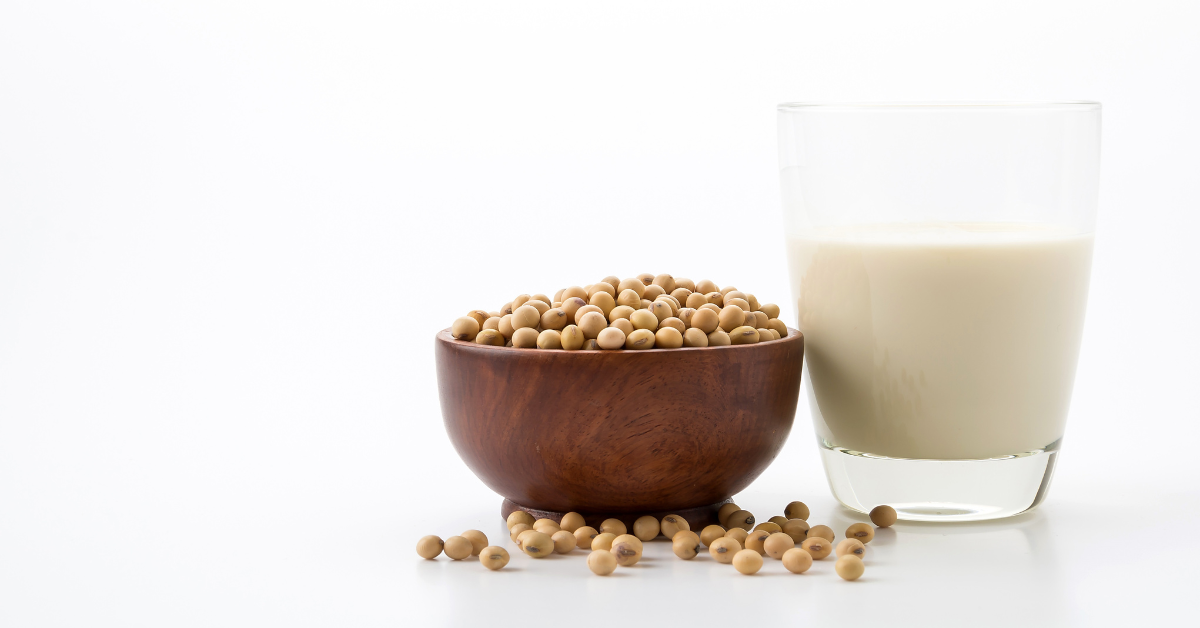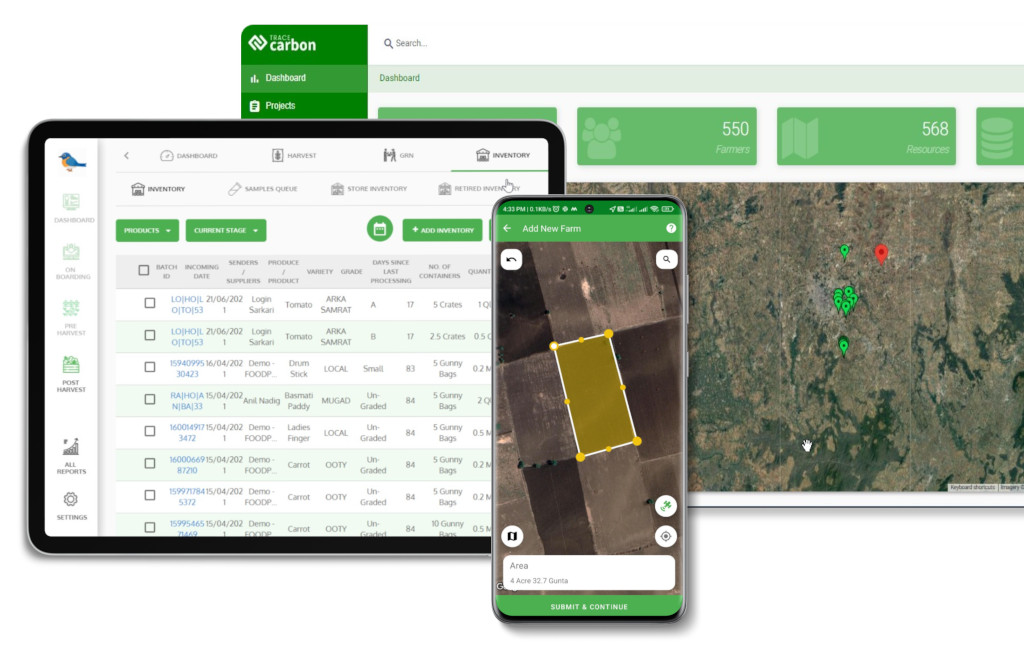Contact: +91 99725 24322 |
Menu
Menu
Quick summary: TraceX helps soy companies in Italy meet EUDR requirements with automated Due Diligence Statement (DDS) generation, farm-level traceability, and deforestation risk verification.

The EUDR DDS for Soy Supply Chain in Italy ensures that all soybeans and soy-derived products entering the EU are deforestation-free, legally produced, and fully traceable to their farm of origin. Under the EU Deforestation Regulation (EUDR), Italian importers, crushers, and feed or food manufacturers must submit Due Diligence Statements (DDS) containing verified geolocation data, legality proof, and risk assessments. As Italy is a key European hub for soy import and processing, adopting digital traceability systems is essential to streamline compliance, reduce regulatory risk, and maintain market access under the upcoming EUDR enforcement.
The EU Deforestation Regulation (EUDR) represents a landmark shift in sustainable sourcing, aiming to eliminate deforestation and forest degradation linked to key commodities such as soy. It mandates that all soy entering the EU market must be deforestation-free, legally produced, and traceable to its exact point of origin.
Soy and its derivatives, including soybeans, soy meal, soy oil, and protein isolates, are among the commodities explicitly regulated under the EUDR. Given soy’s extensive use in animal feed, food products, and industrial applications, it plays a central role in global deforestation patterns, particularly in regions like Brazil, Argentina, and Paraguay. The regulation seeks to break this link by ensuring verified, transparent, and geolocated sourcing data for every shipment.
Italy serves as one of Europe’s most critical hubs for soy importation, processing, and re-export. The country imports large volumes of soybeans for both livestock feed production and food-grade processing, making it an early point of entry for EUDR compliance. Italian crushers, feed manufacturers, and soy processors are often first placers on the EU market, meaning they carry the full burden of preparing and submitting Due Diligence Statements (DDS) to prove that their supply chains are deforestation-free and legally compliant.
Operators and traders placing soy or soy-derived products on the EU market must comply with the EUDR by 30 December 2025, while small and medium enterprises (SMEs) have until 30 June 2026. Each batch of soy placed on the market must be accompanied by a DDS containing verified geolocation coordinates, legality documents, and risk assessment results.
The typical soy supply chain for Italy begins in Latin American producing regions, where soy is cultivated across vast and sometimes high-risk areas. The beans are shipped in bulk to Italian ports such as Ravenna, Genoa, or Venice, where they are processed in crushing facilities into soy meal, oil, or feed ingredients. From there, products move through Italy’s food and feed manufacturing sectors, supplying domestic markets and being re-exported across Europe.
Under the EUDR, every step from farm-level mapping and supplier documentation to processing and export must be digitally traceable and verifiable. For Italian soy operators, this means investing in transparent data systems, supplier engagement, and traceability platforms that can seamlessly integrate compliance reporting into everyday operations.
Master the step-by-step process of submitting Due Diligence Statements under the new EUDR rules.
Read the blog on filing DDS for EUDR compliance
Explore how soy importers can achieve traceability, transparency, and compliance under EUDR.
Read the full blog on EUDR Soy Compliance
Italian soy importers and processors face several structural and operational challenges in achieving EUDR DDS compliance:
Soy supply chains often involve multiple intermediaries, brokers, exporters, and aggregators, making it difficult for Italian importers to trace soybeans back to individual farms or plots. The lack of direct supplier relationships increases data gaps and verification risks.
Under the EUDR, operators must provide precise geolocation coordinates for every plot of land where soy is cultivated. Bulk shipments typically combine soy from thousands of small plots, especially in Brazil or Argentina, complicating both mapping and verification.
Land-use laws, forest governance, and certification systems differ widely between producing countries. Italian companies must ensure both deforestation-free and legally produced compliance across regions with inconsistent documentation and enforcement.
Soy moves through several processing stages from beans to meal, oil, and feed or food products, often mixed from different origins. Tracking provenance across these derivative stages requires integrated digital traceability, not manual recordkeeping.
Failure to comply could result in blocked shipments, hefty fines, or market exclusion, damaging Italy’s image as a leading agri-food exporter. Large downstream buyers, especially feed manufacturers and food brands, are now demanding verified, deforestation-free soy inputs.
Collecting and validating the required data, geolocation, harvest dates, and legality proofs requires a high degree of digital maturity. Many suppliers in Latin America and Asia lack the technology infrastructure for automated reporting.
Italy’s soy ecosystem is centred on import, crushing, and feed manufacturing. Many Italian firms are considered “first placers” under the EUDR, meaning the compliance burden lies heavily on them. To meet the December 2025 deadline, Italian companies must start digital traceability integration now, working closely with upstream suppliers and cooperatives to ensure full visibility and compliance.
To navigate these risks, Italian importers and processors must adopt digital traceability, automated DDS systems, and AI-driven deforestation risk assessment tools. These solutions not only close data gaps but also transform compliance into a measurable sustainability advantage.
As Italy’s soy importers, crushers, and feed manufacturers prepare for the EUDR’s 2025 compliance deadline, digital transformation is becoming essential. The complexity of soy supply chains involving thousands of small farms and multi-country sourcing makes manual compliance impractical. The TraceX EUDR Platform offers a unified, data-driven solution that automates, verifies, and simplifies Due Diligence Statement (DDS) workflows across the Italian soy ecosystem.
TraceX automates the creation and submission of EUDR-compliant DDS forms, integrating directly with the EU’s centralized reporting system. This enables Italian importers and processors to seamlessly capture supplier data, geolocation, and legality documents, reducing administrative overhead and ensuring audit-ready accuracy.
Each shipment of soybeans or derived products (meal, oil, protein isolates) is digitally linked to its verified origin using blockchain-backed traceability. This immutable ledger ensures transparent, tamper-proof records from farm to Italian ports, guaranteeing full proof of origin and compliance with deforestation-free criteria.
With TraceX’s mobile and web-based tools, cooperatives, aggregators, and farms can be easily onboarded into the compliance network. GPS-based mapping captures polygon-level coordinates and ownership data, meeting EUDR traceability standards even across fragmented producer landscapes like Brazil’s Cerrado or Argentina’s Pampas.
AI-powered dashboards continuously monitor deforestation exposure, legality risks, and supplier credibility. Italian soy companies gain real-time insights to prioritize low-risk sources, strengthen supplier verification, and proactively mitigate compliance risks before DDS submission.
An Italian soy processor importing beans from Brazil and Argentina uses TraceX to digitally map farms, validate supplier legality, and auto-generate DDS reports within minutes. The result is faster compliance, transparent reporting, and stronger relationships with downstream feed and food buyers.
By combining blockchain integrity, AI analytics, and regulatory-ready automation, TraceX transforms EUDR compliance from a reporting challenge into a competitive differentiator. Italian soy businesses using TraceX gain visibility, efficiency, and ESG credibility, building a deforestation-free, future-proof soy supply chain.

As sustainability becomes a key purchasing criterion, European feed manufacturers, food producers, and retailers are increasingly prioritizing deforestation-free soy. For Italian soy importers and processors, EUDR compliance provides a verified assurance of ethical sourcing, strengthening partnerships with large-scale buyers and global food brands seeking transparency and traceability.
EUDR compliance offers Italian soy companies a way to align with broader ESG strategies including responsible sourcing, carbon reduction, and biodiversity protection. By mapping origins and verifying legality, firms can demonstrate measurable progress toward sustainable agriculture and feed-chain transparency, a growing demand from investors and regulators alike.
Companies that adopt digital traceability and compliance systems early will enjoy faster customs clearance, reduced audit risks, and priority supplier status among sustainability-focused buyers. This proactive approach turns regulatory readiness into a strategic differentiator for Italian soy exporters and feed manufacturers in a competitive EU market.
EUDR non-compliance could result in shipment delays, fines, or market exclusion, disrupting supply chains and eroding buyer trust. Implementing traceable, verifiable systems minimizes these risks, ensuring Italian operators maintain uninterrupted access to EU markets while safeguarding their brand reputation.
By ensuring that all soy entering Italy is deforestation- and conversion-free, the Italian soy sector directly supports global climate action, biodiversity conservation, and sustainable land use. This aligns with the EU’s broader Green Deal objectives and positions Italy as a leader in sustainable agri-trade and responsible commodity sourcing.
The EUDR DDS for Soy Supply Chain in Italy marks a defining shift toward sustainable, transparent, and data-driven agri-trade. As the EU tightens its deforestation regulations, Italian soy importers, processors, and feed manufacturers must move beyond paper-based compliance to digitally verifiable due diligence systems. By adopting platforms like TraceX, companies can automate DDS creation, validate farm-level origins, and mitigate regulatory risks, all while strengthening brand credibility and buyer confidence. Ultimately, compliance is not just a legal mandate but a strategic opportunity for Italy’s soy sector to lead Europe’s transition toward deforestation-free, responsible, and traceable food systems.
Understand the key components of EUDR compliance and how to streamline your DDS process efficiently.
Read the blog on EUDR Due Diligence
Learn how AI-driven automation and intelligent workflows simplify data collection, verification, and reporting.
Explore the blog on Agentic AI for EUDR
Unpack the biggest hurdles faced by importers under EUDR and how technology can turn compliance into a competitive edge.
Read the blog on Challenges for EU Importers
The EUDR is a regulation by the European Union aimed at preventing deforestation-linked commodities like soy from entering the EU market. It requires full supply chain traceability and submission of Due Diligence Statements (DDS) proving compliance.
A DDS is a formal declaration confirming that soy imported or sold in Italy is deforestation-free and legally sourced. It must include farm-level geolocation data and risk assessment documentation.
All Italian importers, traders, processors, and retailers handling soy are required to comply. Both large corporations and small operators must provide DDS documentation for their supply chains.
Common difficulties include gathering farm-level data, verifying deforestation-free claims, managing multiple smallholders, and preparing DDS documents manually.
TraceX digitizes the entire process of mapping soy farms, verifying deforestation risks via satellite data, and auto-generating compliant DDS reports ready for submission.
Yes. TraceX is built for scalability and ease of use. It supports both large enterprises and smallholder networks, enabling simple data collection via mobile apps
